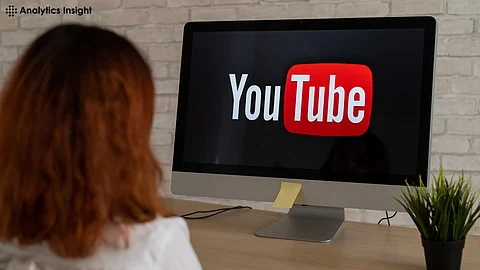

YouTube is set to introduce a new YouTube AI system to detect users under 18, even if they fake their age while signing up. The goal is to strengthen protections for minors across its platform. The rollout will start in the US on August 13, 2025.
The AI system will analyze user behavior, such as viewing patterns and content choices, to estimate their real age. If the system detects a user as a teenager, YouTube will enforce stricter safety measures, regardless of the age listed in the account.
YouTube’s new enhancement feature will use AI-based technology to verify in detail whether a user is underage, in case the age was entered falsely while creating an account. Established safety measures will, in turn, be imposed on child users identified by the system.
As part of the safety measures, access to age-restricted content is blocked; personalization of ads is turned off; uploads and commenting for minors are restricted; and break reminders during viewing are displayed on all grounds to prevent targeting of child users.
Should any user feel wrongly labeled, they may initiate a reclassification request by providing identifying information such as an official ID, a credit card, or an age verification selfie. According to YouTube, this process is fairly secure, and all submitted materials shall be destroyed right after the review is complete.
The development comes amidst mounting pressure from regulations. After YouTube was fined $170 million for breach of child privacy laws in the US, it is thus attempting to improve the system to address the gaps left by running on an outdated age verification system and align with international standards for child protection.
Content creators may perceive effects from the alteration since targeted users whom the system has flagged will no longer be viewed through ads, which could impact ad revenues. Such a change could thereby usher in more restrictions on children's content and reduce its viewership. Privacy advocates have raised concerns about inaccuracies in the AI model.
Incorrect classifications can happen sometimes for family-friendly or nostalgic teen content. YouTube emphasizes that significant effort is being put into making the system highly accurate and acknowledges some mistakes, but remedying measures will apply to those cases.
YouTube age detection technology is being enhanced to ensure that users access only age-appropriate content. In response to rising concerns, YouTube’s child privacy laws are being tightened to better protect minors from data misuse and targeted advertising.
Also Read: How Age Verification Saves Kids from Watching Porn?
The AI-powered age-detector system will debut first in the US and then, based on its performance, be rolled out globally. This aligns with the evolving regulations in countries such as the EU, UK, and Australia.
As governments tighten online safety laws, with increased pressure mounting on platforms to protect young users, YouTube, through AI, intends to apply age-appropriate controls for children whose records in the setup process are either false or deliberately so.
As part of its platform improvements, YouTube safety measures now include stricter content filters and increased parental controls. The new YouTube AI-powered age-detector system uses machine learning to verify users' ages more accurately without relying solely on self-declared data.
Specific privacy issues, including user profiling, and questions of fairness arise when such a system incorrectly profiles an artist or user, leading to significant disagreements.
